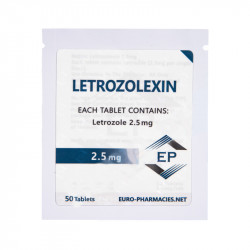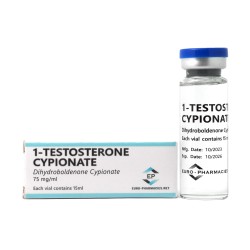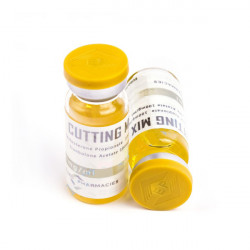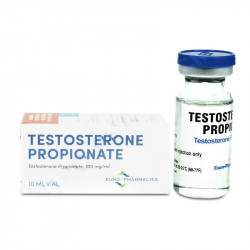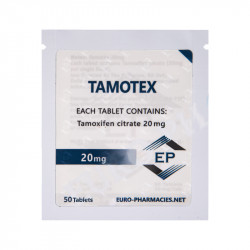
The MINIMUM ORDER value from USA Warehouse 3 is $200, shipping excluded. DO NOT PLACE ORDERS BELOW THIS VALUE!
Thank you for understanding,
OSGear Team
BPC-157 5mg Gold - Euro-Pharmacies - US
CLASSIFICATION Peptide Hormone
ACNE No
WATER RETENTION No
HBR No
HEPATOTOXICITY No
AROMATIZATION No
MANUFACTURER Euro-Pharmacies - US
WAREHOUSE USA Warehouse 3
SUBSTANCE
BPC-157 Pentadecapeptide,

BPC-157 5mg Gold
BPC 157 is a synthetic peptide that’s currently being used and investigated for its potential regenerative effects. It allegedly helps people regenerate muscle tissue quicker and recover faster after a workout, which makes it pretty ideal for athletes and bodybuilders.
Unfortunately, compounds like this rarely come without any risks whatsoever. There are some BPC 157 side effects to be aware of, and BPC 157 dosage can vary depending on what you’re using it for. Before you go out trying something new like this, it’s important to understand both the positive and negative aspects of it.
What is BPC 157?
BPC 157 is a peptide supplement, and it’s only one of the dozens – if not hundreds – that are readily available online or in stores that sell supplements. There are some interesting things about BPC 157 that set it apart from some of its competitors.
The first thing that’s noted about BPC 157 is the fact that it’s extracted from a protein that’s found in the gastrointestinal tract. Sound gross? Oh well – this is part of the reason that it’s got such unique effects as a regenerative substance.
While most of the studies that have been done on the stuff have only been done on rodents, they all seem to agree on one thing: BPC 157 is a great substance for helping to protect the body – and not just in the gastrointestinal tract. Its benefits extend to the improvement of conditions like ulcers, damaged intestines, joints, and bones.
It can also help to fight inflammation, ward off brain disease, and help recover the damage done to organs. Unfortunately, since all of these studies have been done on animals – many of which were maimed or injured specifically for the purpose of doing the test – it can be very difficult to find BPC 157 that hasn’t directly or indirectly supported animal testing and cruelty.
How it works
There is a body of evidence that has been growing around BPC 157 since 1991, when researchers first began to study the compound. There are lots of benefits associated with it, mostly to do with its ability to accelerate the regeneration of tissues like muscle, tendons, teeth, and the digestive tract.
Some of the things associated with its use include:
An incredible affinity for helping to heal damaged tendons and bones
A tendency to increase the survival rate of cells
It can offset some of the damage that traditional NSAIDs are known to cause in the digestive tract, while also providing similar anti-inflammatory benefits
Helps to fight off symptoms of IBS
Helps to ward off symptoms and heal periodontitis
Helps improve the speed at which muscles can heal
It can stabilize the production of human gastric fluid, helping to offset a number of conditions and symptoms of digestive upset
One of the ways in which BPC 157 helps to improve our regeneration is by interacting with the body’s production of nitric oxide, a compound which the body produces. Boosting nitric oxide helps expand the blood vessels in the body, making it easier for oxygen, blood, and nutrients to reach important areas in the body.
BPC 157 can also directly improve the health of the endothelium – the protective lining of the walls of our blood vessels. This means that it can accelerate the speed at which our body heals wounds.
It also helps the body produce collagen. Collagen is the primary protein found in the tissue of our skin, so enhancing the production of this vital protein can enhance the rate at which we heal from wounds and damaged skin.
BPC 157’s anti-inflammatory effects have actually been suggested to be so potent that they can rival traditional NSAIDs – non-steroidal anti-inflammatory drugs, or simple over-the-counter painkillers like aspirin and Tylenol.
BPC 157 dosage
The dosage range of BPC 157 is generally tailored for people who will be injecting the substance. Most of the studies that have been done on the stuff suggest that people who will be injecting it do it at a dosage range of somewhere between 1-10mcg/kg.
This means that if you weigh 60 kg, you’ll want to take between 60-600 mcg of the stuff. These injections should be taken once daily, however, some users have reported that they find more benefits when using the stuff twice a day, splitting their dose into two separate parts.
How to take it
If you order BPC 157 off the internet, as you’ll most likely have to do, your product will probably be shipped in a powder form. If you’re going to be injecting it, then you’ll have to reconstitute it.
To do this, you’ll want to get some bacteriostatic, or BAC, water. This water is resistant to bacteria and is much safer for injections. To reconstitute your powder, follow these steps:
Take the lid off your BAC water and your BPC 157 and swab both of them with alcohol. Let them try.
You may have to do the math to figure out your exact dosages. If you have a 30 ml bottle of BAC, then you can fill 3 standard insulin syringes with the stuff and empty these into a 5 mg bottle of your BPC. This should fill up the BPC bottle.
If you’re using these ratios, then you’ll get about 250 mcg of BPC 157 every time that you load a standard 1cc needle with the stuff.
For safety, you’ll want to make sure that you keep the stuff in a cool place. It’s highly sensitive to UV light and heat, however, if you keep it at room temperature it will last for about ten weeks. The best place to store it is in the fridge, where it will last for about half a year. BPC can also be frozen for two years.
Injections
BPC works systematically, meaning that it targets the part of your body that needs help. You can inject it in several different ways. Both ways should require that you swab the area with alcohol before injecting to prevent any infections from arising.
Subcutaneous. Subcutaneous injections go under the skin and are generally less painful than intramuscular injections. If you’re going to do a subcutaneous injection, you should try to inject the stuff as near to the site of injury as you can. To do a subcutaneous injection, the easiest way is to pinch up a small piece of skin close to where you’re injured. Stick the needle into the skin that you’re pinching. Some people find that they might need someone to help them with this so they can hold the skin or the needle without slipping.
Intramuscular. Intramuscular injections go straight into the muscle, and are generally more painful than subcutaneous injections. Again, do this as close to the injured area as you can.Intramuscular injections are a bit tougher. If you haven’t done one before, it’s best to have a professional show you how to do it.



